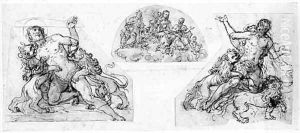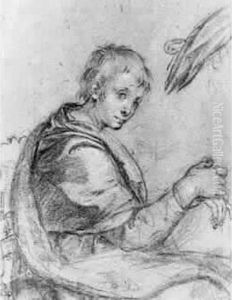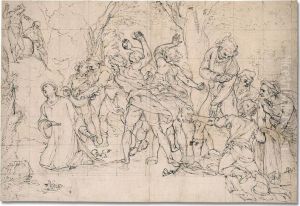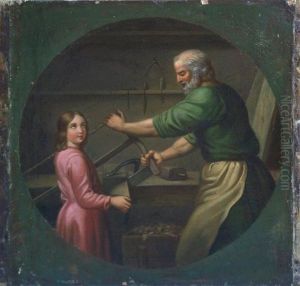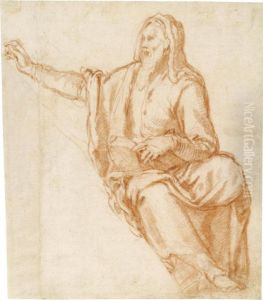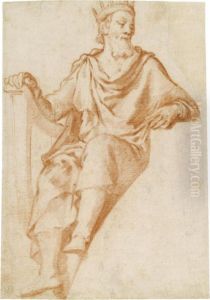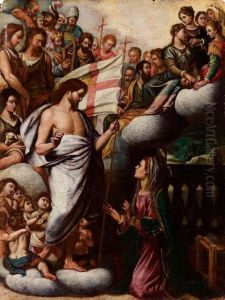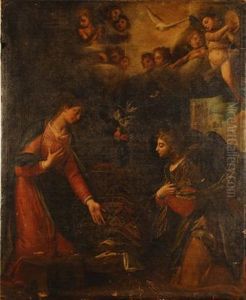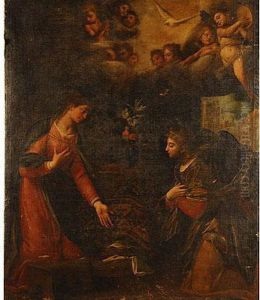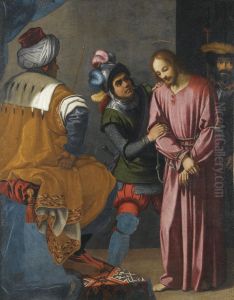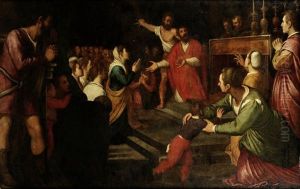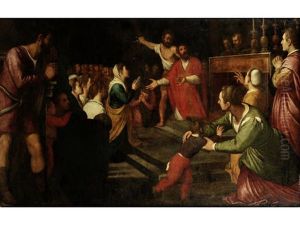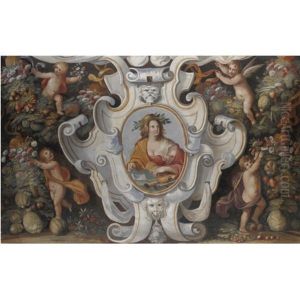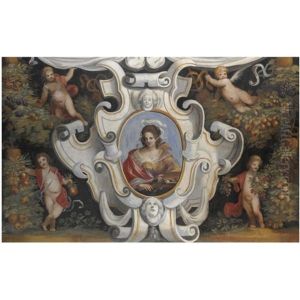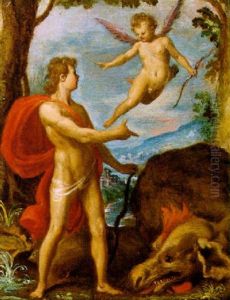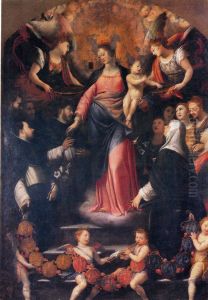Agostino Ciampelli Paintings
Agostino Ciampelli was an Italian painter of the late-Renaissance period. Born in Florence in 1565, Ciampelli grew up during a time when the artistic legacy of the Renaissance was still very much alive and influential. He trained under the Mannerist artist Santi di Tito, which had a significant effect on the development of his own style. Ciampelli’s work, while rooted in the Mannerist tradition, also began to incorporate elements of the emerging Baroque style, which was characterized by dramatic expression, bold colors, and emphasis on light and shadow.
Ciampelli moved to Rome as a young man, which was a pivotal decision for his career. In Rome, he became part of the vibrant and competitive art scene, receiving commissions from the church as well as from private patrons. His works include frescoes, altarpieces, and other religious-themed paintings that can be found in various churches and galleries across Italy.
One of Ciampelli’s most notable contributions was his work in the Vatican, where he painted frescoes in several rooms and gained recognition for his ability to blend narrative clarity with a rich, decorative style. His work in the Vatican served to enhance his reputation and led to further commissions. Ciampelli also worked in other cities in Italy, including his native Florence, where his paintings continued to reflect the transition from the late Renaissance to the early Baroque period.
Despite the success he found during his lifetime, Agostino Ciampelli’s work was later somewhat overshadowed by that of other Baroque masters such as Caravaggio and Bernini. His style, which once represented the avant-garde, came to be seen as somewhat conservative as the Baroque movement evolved. Nevertheless, his paintings remain an important part of the artistic heritage of the period, offering insight into the stylistic shifts and cultural context of late 16th and early 17th-century Italian art.
Agostino Ciampelli passed away in Rome in 1630. Today, his work can be studied for its blend of Mannerist and early Baroque elements, and he is remembered as a skilled artist who contributed to the rich tapestry of Italian Renaissance and Baroque art.
